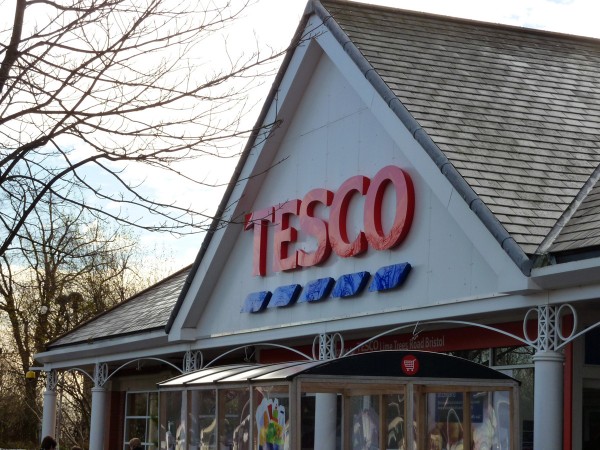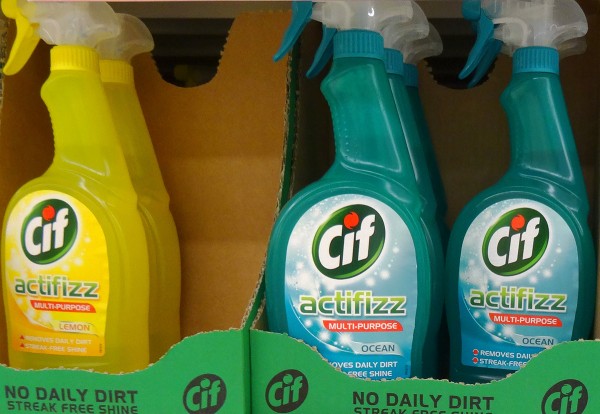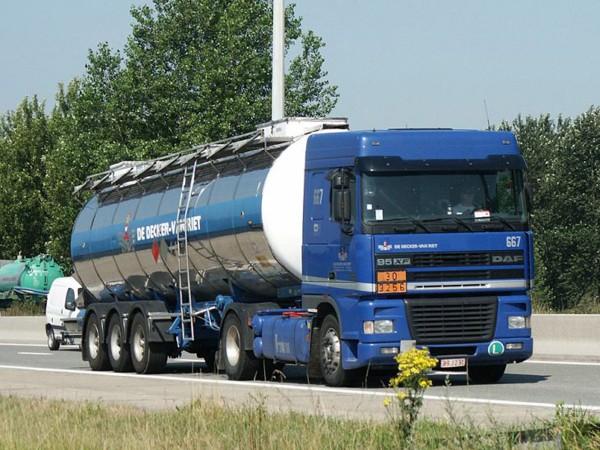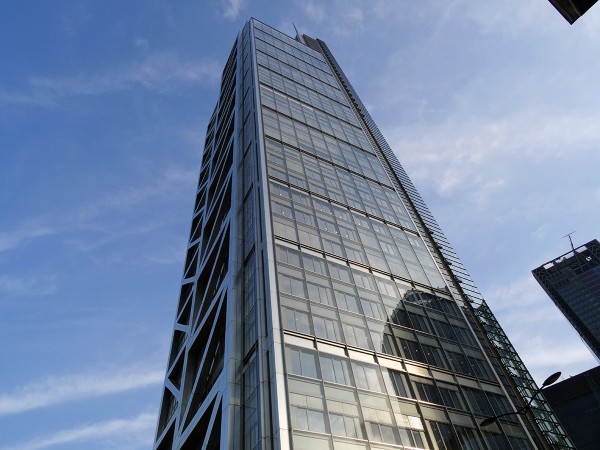 An earlier post on this site described a recent row between Tesco and Unilever that erupted when Unilever attempted to raise the prices it charges Tesco for its products. Unilever justified this because its costs have increased as a result of the UK currency depreciation following the Brexit decision.
An earlier post on this site described a recent row between Tesco and Unilever that erupted when Unilever attempted to raise the prices it charges Tesco for its products. Unilever justified this because its costs have increased as a result of the UK currency depreciation following the Brexit decision.
It also appears that more general concerns that the fall in the value of sterling would lead to higher retail prices were prevalent around the time that the Tesco Unilever dispute came to light. Former Sainsbury’s boss, Justin King, made clear that British shoppers should be prepared for higher prices. He also said that:
Retailers’ margins are already squeezed. So there is no room to absorb input price pressures and costs will need to be passed on. But no one wants to be the first to break cover. No business wants to be the first to blame Brexit for a rise in prices. But once someone does, there will be a flood of companies because they will all be suffering.
It is interesting to consider further why the Tesco and Unilever case was the first to make the headlines and why their dispute was resolved so quickly. In addition, what are the more general implications for the retail prices consumers will have to pay?
Arguably, Unilever saw itself as having a strong hand in negotiations with Tesco because its product portfolio includes a wide variety of must-stock brands, including Pot Noodles, Marmite and Persil, that are found in 98% of UK households..
Unilever has been criticised for using the currency devaluation as an excuse to justify charging Tesco more, since most of its products are made in the UK. However, Unilever was quick to point outthat commodities it uses in the manufacture of products are priced in US dollars, so the currency devaluation can still affect the cost of products that it manufactures in the UK. In addition, Unilever’s chief financial officer, Graeme Pitkethly, insisted that price increases due to rising costs were a normal part of doing business:
We are taking price increases in the UK. That is a normal devaluation-led cycle.
On the other hand, even if the cost increases faced by Unilever are genuine, it is interesting to speculate whether it would have been so quick to adjust its prices downwards in response to a currency appreciation. After all, a commonly observed phenomenon across a range of markets is ‘rockets and feathers’ pricing behaviour i.e. prices going up from a cost increase more quickly than they go down following an equivalent cost decrease.
Compared to Unilever, some other suppliers are likely to have less bargaining power – in particular, those competing in highly fragmented markets and those producing less branded products. In such markets the suppliers may be forced to accept cost increases. For example, almost 50% of butter and cheese consumed in the UK comes from milk sourced from EU markets. Protecting such suppliers is one of the key roles of the Grocery code of conduct that the UK competition agency has put in place.
From Tesco’s point of view it will have benefited from good publicity by doing its best to protect consumers from price hikes. Helen Dickinson, chief executive of the British Retail Consortium, said:
Retailers are firmly on the side of consumers in negotiating with suppliers and improving efficiencies in the supply chain to control the inflationary pressure that is building through the devaluation of the pound.
However, it is also clear that Tesco had its own motives for resisting increased costs for Unilever’s products. In such situations both supplier and retailer should be keen to avoid a situation where they both impose their own substantial mark-ups at each stage of the supply chain. It is well established that this creates a double mark-up and not only harms consumers, but also the supplier and retailer themselves. Instead, the firms have an incentive to use more complex contractual arrangements to solve the problem. For example, suppliers may pay slotting allowances to get a place on the retailers’ shelves in exchange for lower retail mark-ups.
 It has also been claimed that cutthroat competition in the supermarket industry, especially from discounter retailers Aldi and Lidl, made Tesco particularly keen to prevent price rises. Some arguments suggest that these discounters will be best placed to benefit from the currency devaluation as they sell more own brands, have a limited range, the leanest supply chains and benefit from substantial economies of scale. On the other hand, they source more of their products from abroad and it has been suggested that:
It has also been claimed that cutthroat competition in the supermarket industry, especially from discounter retailers Aldi and Lidl, made Tesco particularly keen to prevent price rises. Some arguments suggest that these discounters will be best placed to benefit from the currency devaluation as they sell more own brands, have a limited range, the leanest supply chains and benefit from substantial economies of scale. On the other hand, they source more of their products from abroad and it has been suggested that:
A fall in sterling will push prices up for everyone who sources products from Europe, but Aldi and Lidl will be affected more than most.
One prediction suggests that the overall impact of the currency depreciation on food prices will be an increase of around 3%. This may be particularly worrisome given concerns that the impact will fall most heavily on benefit claimants and other low-income households.
Outside of the food industry, Mike Rake, the chairman of BT, has highlighted the fact that:
Imported mobile phones and broadband home hubs were already 10% more expensive and the cost would have to be passed on to consumers in the near future.
It is therefore clear that the currency devaluation has the potential to create substantial tensions in the supply-chain agreements across a range of markets. The impact on the firms involved and on consumers will depend upon a wide range of factors, including the competitiveness of the markets, the nature of the firms involved and their bargaining power. Furthermore, evidence from an earlier currency depreciation in Latin America makes clear that the price elasticity of demand will be another factor that determines the impact price rises have.
Finally, it is also worth noting that a potential flip side of the currency depreciation is a boost for UK exports. However, it has been suggested that the manufacturing potential to take advantage of this in the UK is limited. In addition, even the manufacturing that does take place, for example in the car industry, often relies on components imported from abroad.
Articles
The Brexiteers’ Marmite conspiracy theories exposed their utter ignorance of how markets really work Independent, Ben Chu (16/10/16)
Tesco price dispute sends Unilever brand perceptions tumbling Marketing Week, Leonie Roderick (17/10/16)
Unilever and Tesco both benefit from their price row, but Brexit will bring more pain Marketing Week, Mark Ritson (19/10/16)
Why the Tesco v Unilever feud was good for British business campaign, Helen Edwards (20/10/16)
Questions
- What are some of the factors that affect a supplier’s bargaining power?
- How might the discount retailers respond to the currency devaluation?
- Use the figures from Latin America in the article cited above to calculate the price elasticity of demand.
- Explain why the price elasticity of demand is an important determinant of the effect of a price rise.
- Can you think of other examples of markets that may be particularly prone to price rises following a currency depreciation?
 A row erupted in mid-October between Tesco, the UK’s biggest supermarket, and Unilever, the Anglo-Dutch company. Unilever is the world’s largest consumer goods manufacturer with many well-known brands, including home care products, personal care products and food and drink. Unilever, which manufactures many of its products abroad and uses many ingredients from abroad in those manufactured in the UK, wanted to charge supermarkets 10% more for its products. It blamed the 16% fall in the value of sterling since the referendum in June (see the blog Sterling’s slide).
A row erupted in mid-October between Tesco, the UK’s biggest supermarket, and Unilever, the Anglo-Dutch company. Unilever is the world’s largest consumer goods manufacturer with many well-known brands, including home care products, personal care products and food and drink. Unilever, which manufactures many of its products abroad and uses many ingredients from abroad in those manufactured in the UK, wanted to charge supermarkets 10% more for its products. It blamed the 16% fall in the value of sterling since the referendum in June (see the blog Sterling’s slide).
Tesco refused to pay the increase and so Unilever halted deliveries of over 200 items. As a result, several major brands became unavailable on the Tesco website. The dispute was dubbed ‘Marmitegate’, after one of Unilever’s products.
 This is a classic case of power on both sides of the market: a powerful oligopolist, Unilever, facing a powerful oligopsonist, Tesco. With rising costs for Unilever resulting from the falling pound, either Unilever had to absorb the costs, or Tesco had to be prepared to pay the higher prices demanded by Unilever, passing some or all of them onto customers, or there had to be a compromise, with the prices Tesco pays to Unilever rising, but by less than 10%. A compromise was indeed reached on 13 October, with different price increases for each of Unilever’s products depending on how much of the costs are in foreign currencies. Precise details of the deal remained secret.
This is a classic case of power on both sides of the market: a powerful oligopolist, Unilever, facing a powerful oligopsonist, Tesco. With rising costs for Unilever resulting from the falling pound, either Unilever had to absorb the costs, or Tesco had to be prepared to pay the higher prices demanded by Unilever, passing some or all of them onto customers, or there had to be a compromise, with the prices Tesco pays to Unilever rising, but by less than 10%. A compromise was indeed reached on 13 October, with different price increases for each of Unilever’s products depending on how much of the costs are in foreign currencies. Precise details of the deal remained secret.
An interesting dynamic in the dispute was that Tesco and Unilever were acting as ‘champions’ for retailers and suppliers respectively. Other supermarkets were also facing price rises by Unilever.  Their reactions were likely to depend on what Tesco did. Similarly, other suppliers were facing rising costs because of the falling pound. Their reactions might depend on how successful Unilever was in passing on its cost increases to retailers.
Their reactions were likely to depend on what Tesco did. Similarly, other suppliers were facing rising costs because of the falling pound. Their reactions might depend on how successful Unilever was in passing on its cost increases to retailers.
This example of ‘countervailing power’, or ‘bilateral oligopoly’, helps to illustrate just how much the consumer can gain when a powerful seller is confronted by a powerful buyer. The battle was been likened to that between two ‘gorillas’ of the industry. Its ramifications throughout industry will be interesting.
Podcasts and Webcasts
 Tesco-Unilever row: Can unique shop explain ‘Marmitegate’? BBC News, Dougal Shaw (13/10/16)
Tesco-Unilever row: Can unique shop explain ‘Marmitegate’? BBC News, Dougal Shaw (13/10/16)
 Tesco, Unilever in Brexit price clash Reuters, David Pollard (13/10/16)
Tesco, Unilever in Brexit price clash Reuters, David Pollard (13/10/16)
 Brexit price-rise warning to shoppers BBC News, Simon Jack (10/10/16)
Brexit price-rise warning to shoppers BBC News, Simon Jack (10/10/16)
 Tesco in Brexit Pricing Spat With Unilever Wall Street Journal (13/10/16)
Tesco in Brexit Pricing Spat With Unilever Wall Street Journal (13/10/16)
 Tesco battles Unilever over prices Financial Times on YouTube (14/10/16)
Tesco battles Unilever over prices Financial Times on YouTube (14/10/16)
 Tesco vs Unilever: Who won? ITV News, Joel Hills (14/10/16)
Tesco vs Unilever: Who won? ITV News, Joel Hills (14/10/16)
Articles
Tesco removes Marmite and other Unilever brands in price row BBC News (13/10/16)
Marmite Brexit Shortage ‘Just The Beginning’ Of ‘Gorilla’ Grocery Battle As Pound Slumps Huffington Post, Louise Ridley (13/10/16)
Unilever sales increase despite dozens of its brands being removed from Tesco shelves Independent, Ben Chapman (13/10/16)
Tesco-Unilever price row: Why pound value slump has caused Marmite to disappear from shelves Independent, Zlata Rodionova (13/10/16)
Tesco pulls Marmite from online store amid Brexit price row with Unilever The Telegraph, Peter Dominiczak, Steven Swinford and Ashley Armstrong (13/10/16)
Tesco runs short on Marmite and household brands in price row with Unilever The Guardian, Sarah Butler (13/10/16)
Tesco pulls products over plunging pound Financial Times, Mark Vandevelde, Scheherazade Daneshkhu and Paul McClean (13/10/16)
Brexit means…higher prices The Economist, Buttonwood’s notebook (13/10/16)
Tesco, Unilever settle prices row after pound’s Brexit dive Reuters, James Davey and Martinne Geller (14/10/16)
Questions
- To what extent can Tesco and Unilever be seen a price leaders of their respective market segments?
- What would you advise other supermarkets to do over their pricing decisions when faced with increased prices from suppliers, and why?
- What would you advise manufacturers of other consumer goods sold in supermarkets to do in the light of the Tesco/Unilever dispute, and why?
- What determines the price elasticity of demand for branded products, such as Marmite, Persil, Dove soap, Hellmann’s mayonnaise, PG Tips tea and Wall’s ice cream?
- What factors will determine in the end just how much extra the consumer pays when supermarkets are faced with demands for higher prices from major suppliers?
- Give some other examples of firms in industries where there is a high degree of countervailing power.
- What are the macroeconomic implications of a depreciating exchange rate?
- If, over the long term, the pound remained 16% below its level in June 2016, would you expect the consumer prices index in the long term to be approximately 16% higher than it would have been if the pound had not depreciated? Explain why or why not.
 This time last year bookmakers Ladbrokes and Coral announced their intention to merge. This was closely followed by a merger between Betfair and Paddy Power. This wave of consolidation appears to have been partly motivated by the rise of online gambling, stricter regulation and increased taxation.
This time last year bookmakers Ladbrokes and Coral announced their intention to merge. This was closely followed by a merger between Betfair and Paddy Power. This wave of consolidation appears to have been partly motivated by the rise of online gambling, stricter regulation and increased taxation.
The UK Competition and Markets Authority (CMA) commenced an initial investigation into the Ladbrokes-Coral merger in late 2015 and, at the request of the merging parties, agreed to fast track the case to a detailed phase 2 investigation.
Despite the growth in the online market, the CMA’s investigation recognised the continued importance of high-street betting shops:
Although online betting has grown substantially in recent years, the evidence we’ve seen confirms that a significant proportion of customers still choose to bet in shops – and many will continue to do so after the merger.
The CMA identified almost 650 local markets where it believed there would be a substantial lessening of competition. It concluded that this could have both local and national effects:
Discounts and offers of free bets to individual customers are 2 of the ways betting shops respond to local competition which could be threatened by the merger. Such a widespread reduction in competition at the local level could also worsen those elements that are set centrally, such as odds and betting limits.
Therefore, earlier this week the CMA announced that before it is prepared to clear the merger, the parties must sell around 350 stores in order to preserve competition in the problem markets (many of these overlap so the number of store sales required is less than the number of problem markets). This divestment represents around 10% of the total number of stores currently owned by the two merging parties. It appears that rivals Betfred and Boylesports, plus a number of private equity investors, are already interested in purchasing the stores.
This may also not be the last consolidation in the industry with the struggling leading bookmaker William Hill apparently attracting merger interest from rival 888 in combination with a casino and bingo hall operator.
Articles
BHA warns CMA over Coral-Ladbrokes merger Racing Post, Bill Barber (7/7/16)
Ladbrokes-Gala Coral must sell 350-400 shops to clear merger BBC, (26/7/16)
William Hill is lukewarm on ambitious three-way merger deal The Telegraph, Ben Martin (25/7/16)
Questions
- Why might the merging parties in this case have been so keen to fast track the case to phase 2?
- What are the key factors in defining the market in this case? How do you think these would have affected the decision?
- Are there arguments that wider social issues in addition to the effect on competition should be taken into account when considering mergers in this market?
- Which of the potential purchasers of the divested stores do you think might be best for competition?
- How do you think this market will evolve in the future?
 Record fines have been imposed by the European Commission for the operation of a cartel. Truck makers, Volvo/Renault, Daimler, Iveco and DAF have been fined a total of €2.93bn. The fines were considerably higher than the previous record fine of €1.7bn on banks for rigging the LIBOR rate.
Record fines have been imposed by the European Commission for the operation of a cartel. Truck makers, Volvo/Renault, Daimler, Iveco and DAF have been fined a total of €2.93bn. The fines were considerably higher than the previous record fine of €1.7bn on banks for rigging the LIBOR rate.
Along with MAN, they were found to have colluded for 14 years over pricing. They also colluded in passing on to customers the costs of compliance with stricter emissions rules. Together these five manufacturers account for some 90% of medium and heavy lorries produced in Europe.
The companies have admitted their involvement in the cartel. If they had not, the fines might have been higher. MAN escaped a fine of €1.2bn as it had revealed the existence of the cartel to the Commission.
A sixth company, Scania, is still in dispute with the Commission over its involvement. Thus the final total of fines could be higher when Scania’s case is settled.
In addition, any person or firm adversely affected by the cartel can seek damages from any of the companies in the national courts of member states. They do not have to prove that there was a cartel.
The Commission hopes that the size of the fine will act as a disincentive for other firms to form a cartel. ‘We have, today, put down a marker by imposing record fines for a serious infringement,’ said Margrethe Vestager, the EU’s competition commissioner.
Also, by being able to exempt a cartel member (MAN in this case) from a fine if it ‘blows the whistle’ to the authorities, it will help to break existing cartels.
There are some other major possible cartels and cases of abuse of market power currently being considered by the Commission. These include Google and whether unfair tax breaks were given to Apple and Amazon by Ireland and Luxembourg respectively.
Articles
Price-Fixing Truck Makers Get Record E.U. Fine: $3.2 Billion New York Times, James Kanter (19/7/16)
 Truckmakers Get Record $3.23 Billion EU Fine for Cartel Bloomberg, Aoife White (19/6/16)
Truckmakers Get Record $3.23 Billion EU Fine for Cartel Bloomberg, Aoife White (19/6/16)
EU fines truckmakers a record €2.93bn for running 14-year cartel Financial Times, Peter Campbell, Duncan Robinson and Alex Barker (19/7/16)
Truckmakers fined by Brussels for price collusion The Guardian, Sean Farrell (19/7/16)
Europa Press Release
Antitrust: Commission fines truck producers € 2.93 billion for participating in a cartel European Commission (19/7/16)
Information
Competition DG European Commission
Questions
- How have the various stakeholders in the truck manufacturing industry been affected by the operation of the cartel?
- What incentive effects are there, (a) for existing cartel members and (b) for firms thinking of forming a cartel, in the fining system used by the European Commission?
- Unlike the USA, the EU cannot jail managers for oligopolistic collusion. Compare the relative effectiveness of large fines and jail sentences in deterring cartels.
- What determines the profit-maximising price(s) for a cartel?
- Apart from the threat of action by the competition authorities, what determines the likely success of a cartel in being able to fix prices?
- Choose two other cases of possible cartels or the abuse of market power being examined by the European Commission. What is the nature of the suspected abuse?
 In the following article, Joseph Stiglitz argues that power rather than competition is a better starting point for analysing the working of capitalism. People’s rewards depend less on their marginal product than on their power over labour or capital (or lack of it).
In the following article, Joseph Stiglitz argues that power rather than competition is a better starting point for analysing the working of capitalism. People’s rewards depend less on their marginal product than on their power over labour or capital (or lack of it).
As inequality has widened and concerns about it have grown, the competitive school, viewing individual returns in terms of marginal product, has become increasingly unable to explain how the economy works.
Thus the huge bonuses, often of millions of pounds per year, paid to many CEOs and other senior executives, are more a reflection of their power to set their bonuses, rather than of their contribution to their firms’ profitability. And these excessive rewards are not competed away.
Stiglitz examines how changes in technology and economic structure have led to the increase in power. Firms are more able to erect barriers to entry; network economies give advantages to incumbents; many firms, such as banks, are able to lobby governments to protect their market position; and many governments allow powerful vested interests to remain unchecked in the mistaken belief that market forces will provide the brakes on the accumulation and abuse of power. Monopoly profits persist and there is too little competition to erode them. Inequality deepens.
According to Stiglitz, the rationale for laissez-faire disappears if markets are based on entrenched power and exploitation.
Article
Monopoly’s New Era Chazen Global Insights, Columbia Business School, Joseph Stiglitz (13/5/16)
Questions
- What are the barriers to entry that allow rewards for senior executives to grow more rapidly than median wages?
- What part have changes in technology played in the increase in inequality?
- How are the rewards to senior executives determined?
- Provide a critique of Stiglitz’ analysis from the perspective of a proponent of laissez-faire.
- If Stiglitz analysis is correct, what policy implications follow from it?
- How might markets which are currently dominated by big business be made more competitive?
- T0 what extent have the developments outlined by Stiglitz been helped or hindered by globalisation?
 An earlier post on this site described a recent row between Tesco and Unilever that erupted when Unilever attempted to raise the prices it charges Tesco for its products. Unilever justified this because its costs have increased as a result of the UK currency depreciation following the Brexit decision.
An earlier post on this site described a recent row between Tesco and Unilever that erupted when Unilever attempted to raise the prices it charges Tesco for its products. Unilever justified this because its costs have increased as a result of the UK currency depreciation following the Brexit decision. It has also been claimed that cutthroat competition in the supermarket industry, especially from discounter retailers Aldi and Lidl, made Tesco particularly keen to prevent price rises. Some arguments suggest that these discounters will be best placed to benefit from the currency devaluation as they sell more own brands, have a limited range, the leanest supply chains and benefit from substantial economies of scale. On the other hand, they source more of their products from abroad and it has been suggested that:
It has also been claimed that cutthroat competition in the supermarket industry, especially from discounter retailers Aldi and Lidl, made Tesco particularly keen to prevent price rises. Some arguments suggest that these discounters will be best placed to benefit from the currency devaluation as they sell more own brands, have a limited range, the leanest supply chains and benefit from substantial economies of scale. On the other hand, they source more of their products from abroad and it has been suggested that: 





